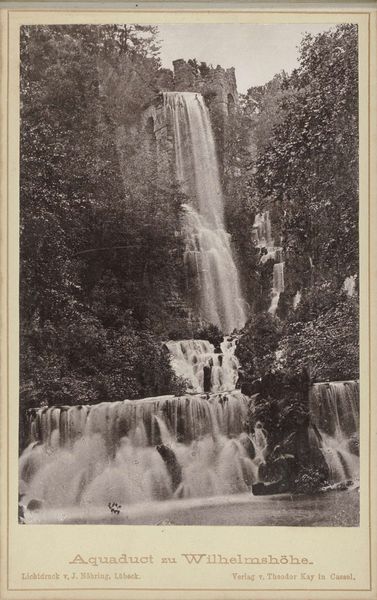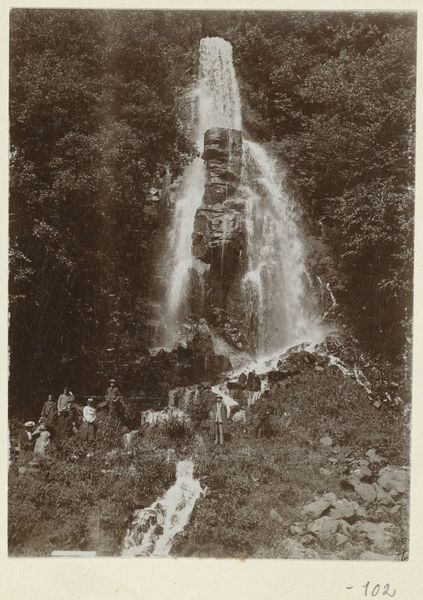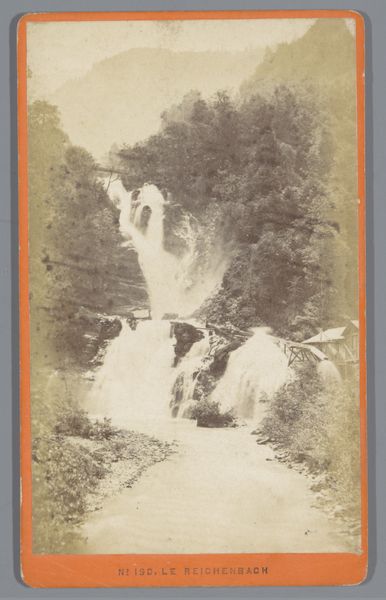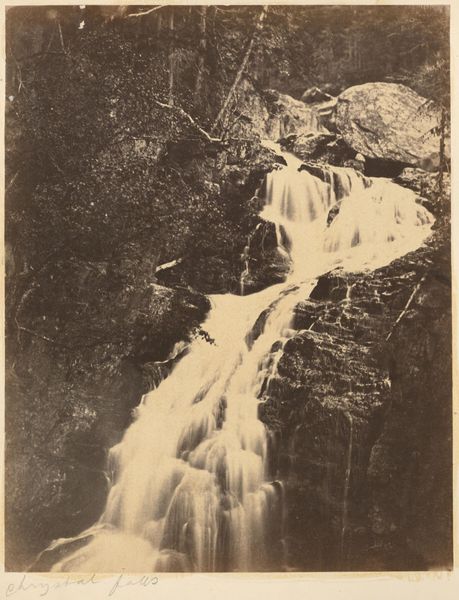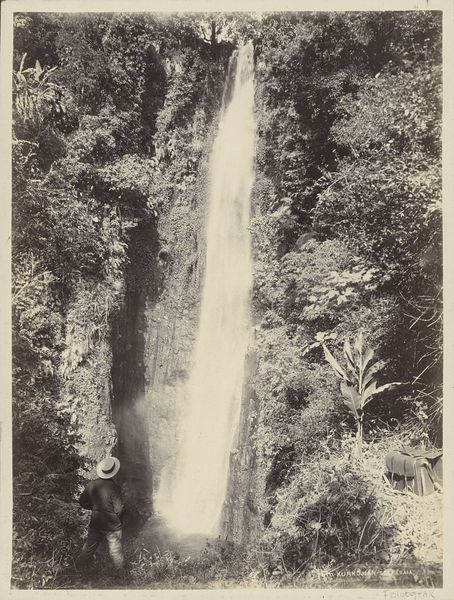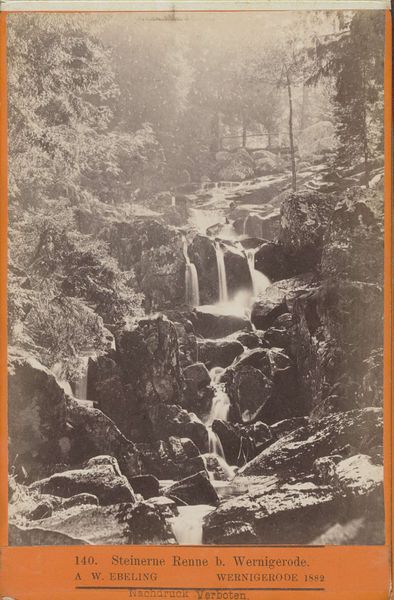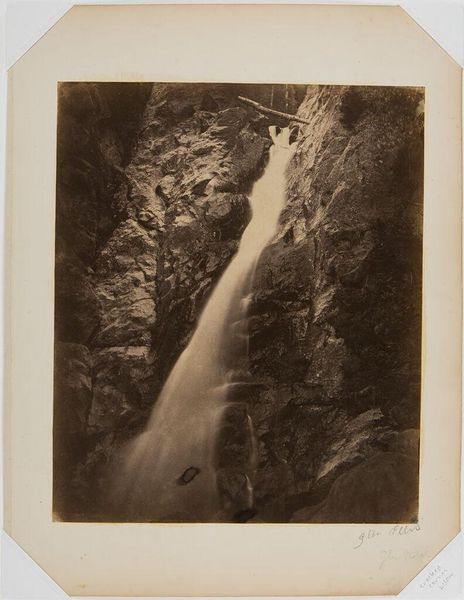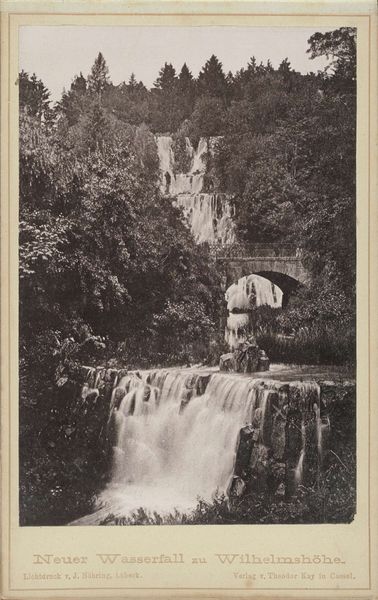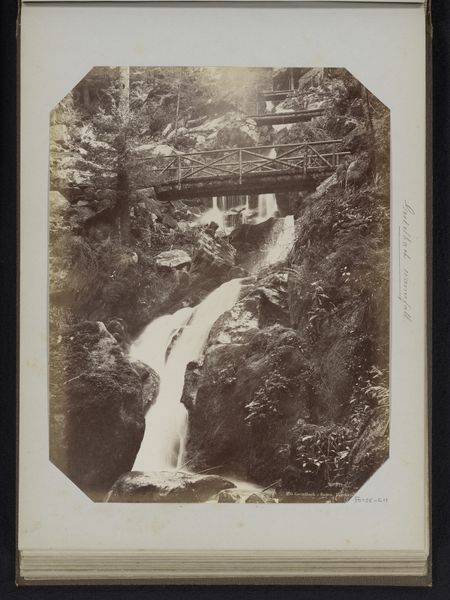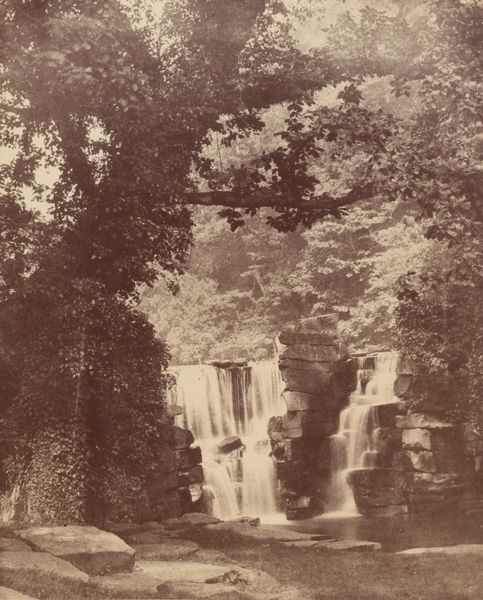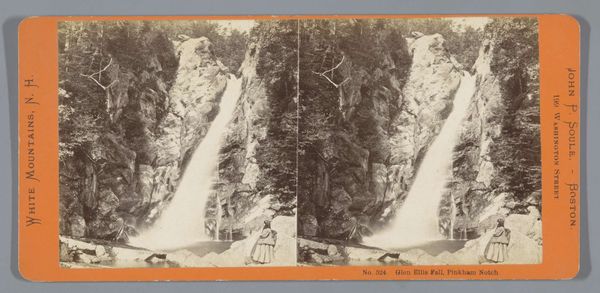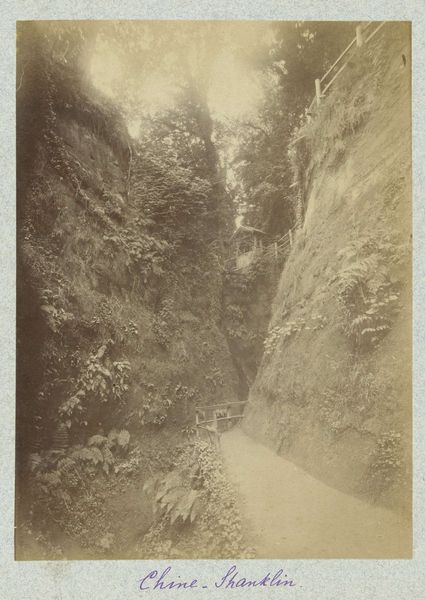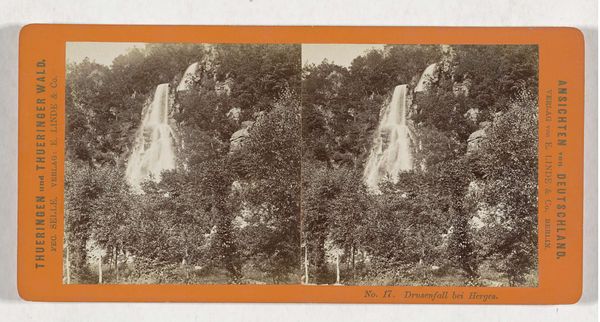
Dimensions: height 153 mm, width 98 mm
Copyright: Rijks Museum: Open Domain
Editor: This albumen print, titled "Waterval in het Drusendal in de Harz," was taken by R. Höfel around 1870 to 1890. It's captivating—the waterfall is framed so dramatically by the trees. What can you tell me about the historical context of this type of image? Curator: This image speaks volumes about the cultural shifts of the late 19th century. Photography like this democratized access to landscapes previously only experienced by the elite. Consider the rise of tourism and the emerging middle class, fueling the demand for picturesque views packaged for consumption. Editor: So, it’s more than just a pretty picture? Curator: Absolutely. These images played a vital role in shaping perceptions of nature. The “Romantic” framing, as indicated by the tag, positions nature as sublime, but also, conveniently, as a resource to be managed and enjoyed. Think about the political implications; who has access to these natural wonders, and who profits? Notice also the positioning of the waterfall. Does it feel "wild" or somewhat controlled, presented as a spectacle for an audience? Editor: I hadn't thought about the control aspect, especially with what appears to be a constructed platform. So the image both romanticizes nature and subtly highlights human intervention? Curator: Precisely. It prompts us to consider how art serves the purposes of its time. It normalizes a particular relationship with the natural world that, in turn, influences policy, tourism, and cultural identity. What I find compelling is how it embodies this duality; nature admired, and nature managed, all within one frame. Editor: It’s fascinating to consider this photo as a product of its time, reflecting the era's values and power dynamics, rather than just a simple landscape image. Thanks, I learned a lot. Curator: Indeed. The politics of imagery is something worth remembering; this piece is a reminder of the layers beneath the surface, isn't it?
Comments
No comments
Be the first to comment and join the conversation on the ultimate creative platform.
